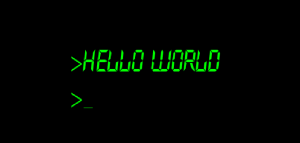
This article represents some of the basic concepts required to be understood to write Hello world using R programming language and, execute the same. Please feel free to comment/suggest if I missed to mention one or more important points. Also, sorry for the typos.
Following are the key points described later in this article:
- Basic Concepts to Write Hello World Function in R
- Hello World – Code Example
Basic Concepts to Write Hello World Function in R
Following are some key points to pay attention at, while working Hello World example:
- R code is written as a set of one or more functions.
- In R, one could assign a function to any variable
- A function is defined using a “function” keyword
- R code is called as a script and saved with *.R extension
- The R script is executed using source command shown later in this article
Hello World – Code Example
Following is code example for Hello world. Pay attention to some of the following:
- Usage of sprintf function to print Hello World
- The way, argument “name” is passed to the function
hello <- function( name ) {
sprintf( "Hello, %s", name );
}
Follow the instructions below to execute the script:
- Click on File > New script that opens a window where you could write your script. Copy and paste the above script in the file.
- Save the file as, may be, helloworld.R
- Go to command prompt in R console, and write following command to execute the script.
source("Path_to_the_file")In case of windows, use “\\” to escape the back slash.
- Execute command, hello(“Calvin”)
- This would print Hello, Calvin
Latest posts by Ajitesh Kumar (see all)
- Coefficient of Variation in Regression Modelling: Example - November 9, 2025
- Chunking Strategies for RAG with Examples - November 2, 2025
- RAG Pipeline: 6 Steps for Creating Naive RAG App - November 1, 2025
I found it very helpful. However the differences are not too understandable for me